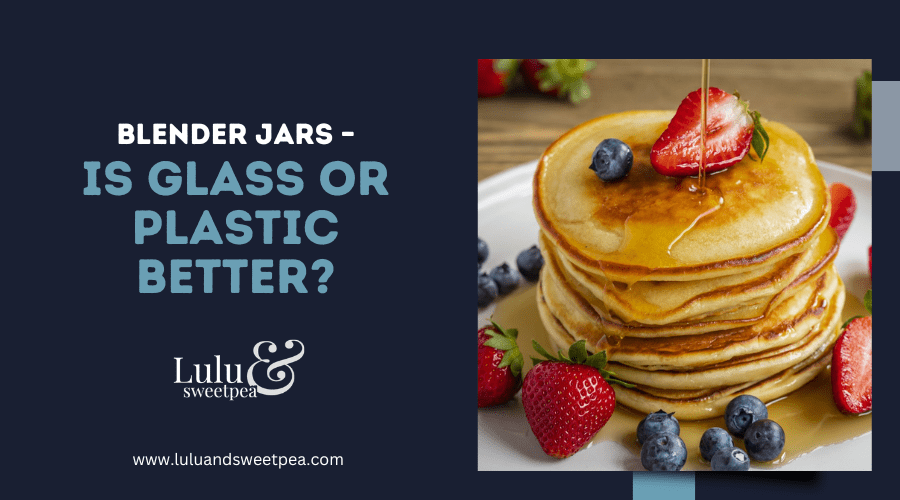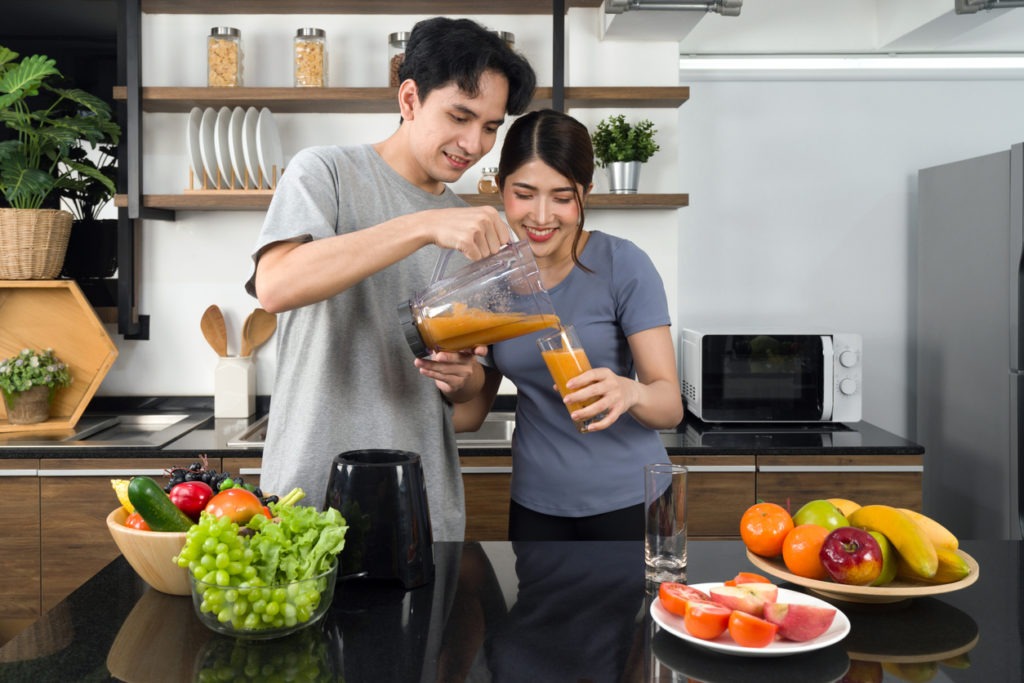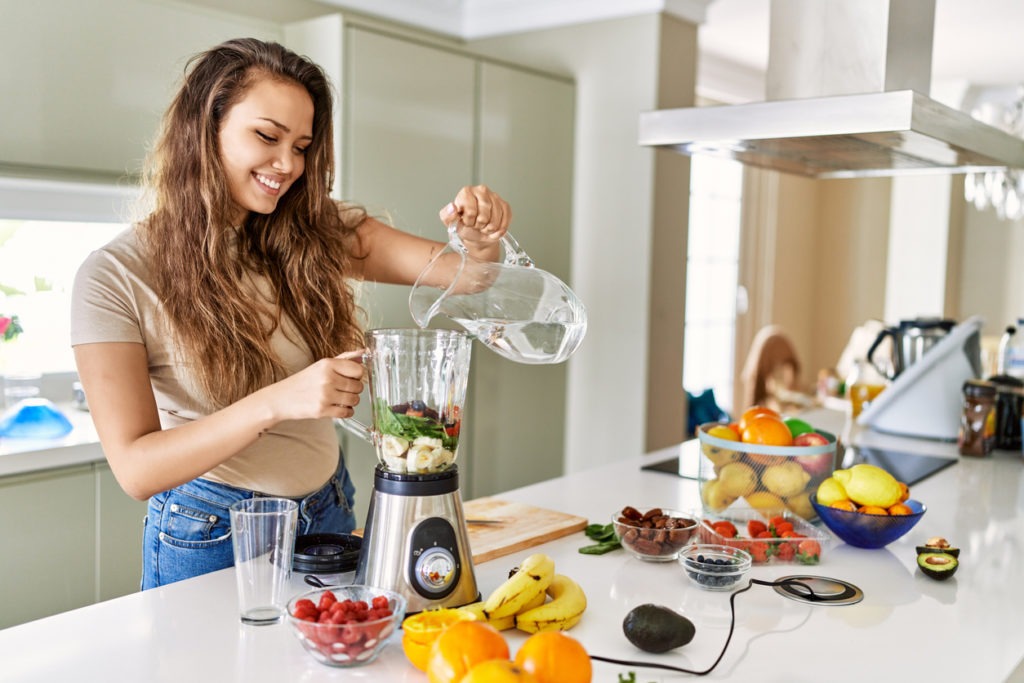Whether you need or don’t need a kitchen blender varies from one household to another, but you can agree that it’s a must-have if you want to prepare healthier foods for your family. Drinking blended fruits and vegetables are essential for taking in more nutrients in the body. It can also do things like make hummus or create soups and sauces, which is excellent if you prefer homemade to store-bought. So if you’re considering buying a blender, consider it an investment for your health and well-being.
One of the essential parts of a blender is the jar. Often, people neglect and disregard this aspect when buying a blender. Though it does not influence the blender’s performance, it’s still an important factor to consider – after all, it will hold your blended foods and drinks.
Blender jars come in different shapes and forms, including the material used to make their body. It’s your choice, however, the choices would typically be narrowed down to two: glass and plastic. With lots of models and variations to choose from, choosing the right blender with the right kind of jar is a challenging task. Get to know the pros and cons of having glass or plastic so you can make the right choice.
Glass Blender Jars
A glass blender jar might be the right choice for you if you value appearance, clarity through the bowl, and its vintage appeal. Glass has several benefits.
It’s a scratch-resistant material that rarely discolors and stains. Glass can maintain its clear, good looks much longer than plastic. It can make your blender an attractive item in your kitchen. It also repels food odors, so it won’t absorb the smelly ingredient you added to your blender. Once you wash it with soap and water, you won’t have a trace of what you blended last, unlike plastic, which can absorb strong scents like garlic and ginger. Also, it’s mostly safe to place in the dishwasher for a more convenient cleaning – preventing breakage in the process.
Also, glass offers less risk of leaching chemicals into the food after extended use or after being subjected to heat. Plastic materials used in blender jars are often food-safe and BPA-free, but if you want to be extra careful, working with a glass jar is a better alternative.
Glass might break, but high-quality blender jars made of glass are more durable in the long run. But once you drop it hard from a significant height, it would shatter into pieces, rendering it unusable.
Glass can also be heavier to handle than plastics, making it a more significant consideration for those with arthritic hands and the elderly. If you prefer having a glass jar, but the handling is an issue, you might want to consider downsizing the blender to reduce weight. A blender with a large-capacity glass jar can be heavy, so consider if a smaller, high-powered model would be enough to meet your blending needs.
Also, blender models with glass jars are often more expensive than those with plastic jars.
Pros
- More attractive to the eyes
- Has vintage appeal
- Scratch-resistant
- Discoloration, stain, and odor-resistant
- Mostly safe to be used in the dishwasher
- Heatproof
- A step towards better health
Cons
- Heavy
- Bulky in size
- Not handy for those with arthritis or problematic hands
- May break if dropped by mistake
- More expensive
Plastic Blender Jars
Plastic blender jars are more common nowadays because of many reasons. It’s significantly cheaper than glass blender jars, making them a better option for people on a budget. Plastic blender jars are the most common blender you will find in most homes because they are practical to handle, portable, and lightweight. You don’t need to worry about them breaking. They are also great at handling light materials. In addition, plastic blender jars come with pouring spouts that are often more defined and level markings that are often clearer.
Plastic is the best option for traveling and commuting since they are easy to pack, store, and carry. Most portable blenders come with cups made of plastic. Smaller sized-blending jars are great to consider if you are going to prepare foods and drinks in small portions or single-serving quantities. Blenders with plastic jars are also more appropriate to use by the elderly and children since they are easier to handle.
However, plastic jars are only great when dealing with light materials. Ingredients like ice, nuts, and other hard foods may cause scratching or etching in the construction of the plastic, but the good thing is they are cheap to replace. If the plastic jar gets scratched on the inside, cleaning them will be more difficult because the grooves might trap food particles. It may develop an odor over time, which can be hard to remove.
Always look for BPA-free plastic jars because they are safer for health than other varieties.
Pros
- Less expensive
- Lightweight and convenient to handle
- More economical to replace
- Less likely to break or shatter
- Available in large and small sizes with varying capacities
Cons
- May absorb food odors over time
- Can be easily scratched or damaged
- It can be stained and tarnished quickly
- May leach chemicals and synthetic materials into the food
- Not resistant to heat
Plastic Blender Jars vs. Glass Blender Jars
Here’s a comparison of the two materials:
| Plastic Blender Jar | Glass Blender Jar |
| Cheaper | More expensive |
| Lightweight | Heavy and bulky |
| Comes in many different sizes | Usually comes in standard sizes only |
| Unbreakable | It may shatter if dropped |
| It can get scratched, stained or discolored | Scratch and stain-resistant |
| Can absorb odor | Odor-resistant |
| May leach chemicals; find BPA-free to ensure plastic is healthy | No chemical leaching |
| It may not be good for the health when used for a long time | A healthier and safer option |
| Easier to handle | Not easy to handle for people with hand problems like arthritis |
| Most jars are dishwasher safe | Most jars are dishwasher safe |
The key differences between a glass and a plastic blender jar lie in their weight and durability. Depending on the material, the appearance of the item is also significant and can be an important factor to consider for some people.
Consider buying a blender that uses a plastic blender jar if you have families with older members and children because it’s easier to handle, lighter in weight, and unbreakable. Though some may consider plastic unsafe, manufacturers often use BPA-free plastics, which are not harmful. Level markings are usually clearer in these types of jars.
Consider buying a blender with a glass jar if you value longevity and a more sophisticated look. Since glass jars maintain their appearance and are scratch-resistant, it’s better if you plan to use the blender for a longer time. It’s also a better choice if you plan to blend strong-smelling ingredients in the blender, especially when using spices, because it does not retain odor like plastic. And though most plastic jars are BPA-free, you may avoid this confusion and go for a glass blender jar.
Stainless Steel Jars – Another Option to Consider
Typically used with commercial blenders, stainless steel blenders are rising in popularity lately with the home blender industry. These types of blender jars are more durable than plastic or glass but are significantly pricier. It’s commonly used commercially because of its sturdiness and ability to withstand long working hours. They can also handle versatile blending needs such as churning and pureeing.
The greatest drawback with stainless steel is that you cannot monitor the blended contents because it’s not transparent. But for those who are accustomed to blending, not being able to see the inside of the jar won’t be an issue. For those who rely on sight to check if the food or drink is ready, then stainless steel blender jars won’t be a fitting choice.
Conclusion
There is no better choice between plastic or glass – it depends on your preferences and what is most suitable for you. Both types have different pros and cons, but weigh the most important considerations for you and decide from there. Consider your priorities, know what foods and drinks you will be blending, know your budget, and consider who will use the blender.
Whether you choose plastic or glass (or stainless steel), you must clean the blades after each use. It would be more convenient if you chose a model with a removable blade and jar that is dishwasher-safe.
Also, know how your blender works so you can purchase the right parts. If you understand the blending process, it will be easier for you to decide on the suitable jar material because you already know what to expect.
If you don’t have a blender yet, you are missing out on many foods and drinks you might enjoy. There are many types of blenders out there to serve different needs, while some have multiple pitchers for other blending tasks.


